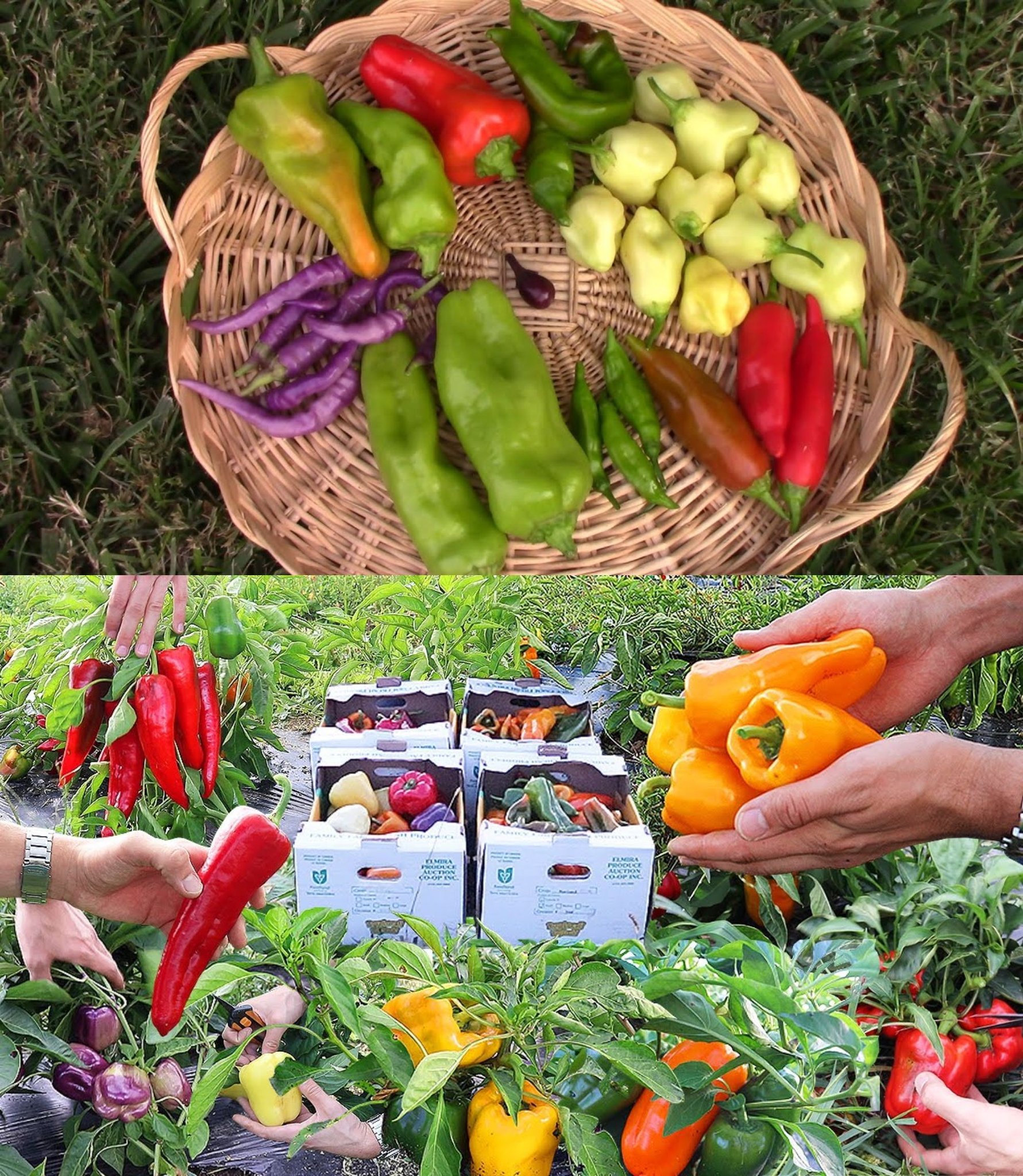
Harvesting peppers of all types is an important step in ensuring they are at their peak flavor and quality. The timing and method for harvesting peppers can vary depending on the type of pepper and your preferences. Here’s a general guide on how and when to harvest peppers:
1. Timing: The timing for harvesting peppers depends on the type and variety. Most peppers are ready for harvest when they reach their mature color and size. Here are some general guidelines for common types of peppers:
- Bell Peppers: Harvest when they reach their full size and have turned their mature color (usually green, red, yellow, or orange). Green bell peppers are less ripe and have a slightly different flavor than colored ones.
- Hot Peppers (e.g., jalapeños, habaneros): These can be harvested when they reach their mature color. The heat level may increase as they ripen and change color. You can harvest them when they are green, or wait until they turn red, yellow, or orange, depending on the variety.
- Sweet Peppers (e.g., banana peppers, cubanelles): Harvest when they reach their mature color, which can vary from green to yellow to red, depending on the variety.
- Chili Peppers: Harvest when they reach their mature color and size. Chili peppers come in various shapes and colors, so refer to the specific variety for guidance.
- Paprika Peppers: These are typically harvested when they turn red or deep red. They are often dried and ground to make paprika.
2. Method: To harvest peppers, follow these steps:
- Use clean, sharp garden shears or scissors to avoid damaging the plant.
- Hold the pepper with one hand and cut the stem with the other. Leave a small portion of the stem attached to the pepper, about 1/2 to 1 inch, to help prolong shelf life.
- Be gentle when removing peppers to avoid damaging the plant or other fruit.
- Harvest peppers carefully to prevent bruising or puncturing, which can lead to spoilage.
3. Frequency: Peppers will continue to produce fruit throughout the growing season, so you can harvest them as they reach the desired size and color. Frequent harvesting encourages the plant to produce more peppers.
4. Post-Harvest Care: After harvesting, store peppers in a cool, dry place or in the refrigerator. They can stay fresh for up to a week or longer. If you have an abundance of peppers, consider preserving them by freezing, drying, or pickling.
Remember that individual pepper varieties may have specific requirements or considerations, so it’s always a good idea to refer to the seed packet or plant tag for information specific to your peppers. Additionally, personal preferences for ripeness and flavor can vary, so you can adjust your harvesting time to suit your taste.